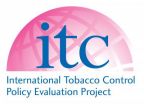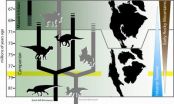(Press-News.org) When a damaging earthquake struck the area of L'Aquila in central Italy in 2009, it was the latest in the region's long history of strong and persistent quakes. The rich recorded history of settlement in the area, along with oral traditions, archaeological excavations, inscriptions and medieval texts, and offer insight into how often the region might expect destructive earthquakes. But according to a new study by Emanuela Guidoboni and colleagues, the historical record on ancient and medieval earthquakes comes with its own shortcomings that must be addressed before the seismic history of L'Aquila can be useful in assessing the current seismic hazard in this area.
To illustrate some of these potential gaps in knowledge, the researchers combed through written records and information from archaeological excavations, covering the period from ancient Roman occupation in the first century A.D. to the late Middle Ages of the 15th century A.D. The authors say, researchers must piece together information ranging from collapsed roofs within an ancient Roman city, to the evidences of rebuilding damaged baths and cisterns. In later years, better written records offer more detail on the specific location and size of earthquakes occurring in 1349, 1456, and 1461 (a long seismic sequence).
The authors say that the early to middle Middle Ages, in particular, have a dearth of information that needs to be addressed to have a more complete picture of the region's seismic history. Overall, the records confirm that the region appears to have been host to a high number of strong earthquakes. The authors also point out a tendency in the area to produce multiple and nearly simultaneous seismic events that vary considerably in their impact.
As Guidoboni and her colleagues note, the earthquakes have had a strong influence in the region's economy and culture. It is a impact that can be seen clearly in the historical records, such as a written account of a large earthquake in 1315. During that quake, warring factions in the town came together after they "were struck with fear at the strong shaking when a frightening earthquake soon afterwards struck that place in a terrible way," the official account says, "and they abandoned their wrongdoing and returned to the narrow path of their conscience."
### "Ancient and Medieval Earthquakes in the Area of L'Aquila (Northwestern Abruzzo, Central Italy), A.D. 1-1500: A Critical Revision of the Historical and Archaeological Data" by Emanuela Guidoboni, Alberto Comastri, Dante Mariotti, Cecilia Ciuccarelli,
and Maria Giovanna Bianchi of Istituto Nazionale di Geofisica e Vulcanologia
Sezione di Bologna.
Ancient records shed light on Italian earthquakes (Aquila area)
2012-08-03
ELSE PRESS RELEASES FROM THIS DATE:
Catching the cap-snatcher
2012-08-03
Researchers at the European Molecular Biology Laboratory (EMBL) in Grenoble, France, have determined the detailed 3-dimensional structure of part of the flu virus' RNA polymerase, an enzyme that is crucial for influenza virus replication. This important finding is published today in PLoS Pathogens. The research was done on the 2009 pandemic influenza strain but it will help scientists to design innovative drugs against all the different influenza strains, and potentially lead to a new class of anti-flu drugs in the next 5-10 years.
The scientists focused on the endonuclease ...
Aerial photos reveal dynamic ice sheet
2012-08-03
Despite the current and rapid melting of the Greenland Ice Sheet, it remains far from certain just when we will have reached a point when scientists will be able to predict its disappearance. Recent research conducted by the University of Copenhagen in conjunction with the Technical University of Denmark (DTU) and the Danish National Survey and Cadastre (KMS) in collaboration with an international team of scientists reports that this is not the first time in recent history that the ice sheet has been in retreat and then stabilised again. The researchers' results have just ...
Alzheimer's cognitive decline slows in advanced age
2012-08-03
The greatest risk factor for Alzheimer's disease (AD) is advancing age. By age 85, the likelihood of developing the dreaded neurological disorder is roughly 50 percent. But researchers at the University of California, San Diego School of Medicine say AD hits hardest among the "younger elderly" – people in their 60s and 70s – who show faster rates of brain tissue loss and cognitive decline than AD patients 80 years and older.
The findings, reported online in the August 2, 2012 issue of the journal PLOS One, have profound implications for both diagnosing AD – which currently ...
Plant-based compound slows breast cancer in a mouse model
2012-08-03
The natural plant compound phenethyl isothiocyanate (PEITC) hinders the development of mammary tumors in a mouse model with similarities to human breast cancer progression, according to a study published August 2 in the Journal of the National Cancer Institute.
Edible plants are gaining ground as chemopreventative agents. PEITC has shown to be effective as a chemopreventative agent in mice for colon, intestinal, and prostate cancer, by inducing apoptosis.
In order to determine the efficacy of PEITC in mammary tumors in mice, Shivendra V. Singh, Ph.D., of the University ...
Cuckoo tricks to beat the neighborhood watch
2012-08-03
To minimise the chance of being recognised and thus attacked by the birds they are trying to parasitize, female cuckoos have evolved different guises. The new research, funded by the Natural Environment Research Council, was published today, 03 August, in the journal Science.
The common cuckoo (Cuculus canorus) lays its eggs in the nests of other birds. On hatching, the young cuckoo ejects the host's eggs and chicks from the nest, so the hosts end up raising a cuckoo chick rather than a brood of their own. To fight back, reed warblers (a common host across Europe) have ...
Breast cancer charity under fire for overstating the benefits of screening
2012-08-03
Professors Lisa Schwartz and Steven Woloshin of the Center for Medicine and the Media at The Dartmouth Institute for Health Policy and Clinical Practice argue that last year's breast cancer awareness month campaign by Susan G Komen for the Cure "overstates the benefit of mammography and ignores harms altogether."
Their views are published on bmj.com today as part of an occasional series highlighting the exaggerations, distortions, and selective reporting that make some news stories, advertising, and medical journal articles "not so."
A growing and increasingly accepted ...
5-year survey confirms Uruguay's world-leading tobacco control strategy is delivering results
2012-08-03
Implementation of graphic labels at 80% of the pack size front and back led to increased awareness of the risks of smoking
Ban on multiple brand presentations reduced smokers' false beliefs that some cigarettes (e.g., "light" or "mild" cigarettes) are less harmful
Strong support for tobacco control policies among smokers
(Thursday August 2nd, 2012, Montevideo, Uruguay and Waterloo, Ontario, Canada): The International Tobacco Control Policy Evaluation Project (the ITC Project) today launched a new report on the effectiveness of tobacco control policies in Uruguay. ...
Mountains, seaway triggered North American dinosaur surge
2012-08-03
ATHENS, Ohio (Aug. 2, 2012)—The rise of the Rocky Mountains and the appearance of a major seaway that divided North America may have boosted the evolution of new dinosaur species, according to a new Ohio University-led study.
The finding, published today in the journal PLOS ONE, may explain patterns of evolution and migration of North American duck-billed and horned dinosaurs in the years leading up to their extinction 65 million years ago, said Terry Gates, a postdoctoral researcher with Ohio University's Heritage College of Osteopathic Medicine who is lead author on ...
Close to the bone
2012-08-03
A genetic screening approach to studying bone disease has found nine new genes associated with bone health and suggests a new way to discover genes that may be implicated in human skeletal diseases. A collaborative study of the mineral content, strength and flexibility of bones has found clues to the cause of bone disorders such as osteoporosis, osteogenesis imperfecta, and high bone density syndromes. The study, which brings together specialist skills in mouse gene deletion and bone measurement to assess the strength of bones in 100 mutant mouse lines, is the largest ...
Modest weight loss can have lasting health benefits, research shows
2012-08-03
ORLANDO, Fla. – Overweight and obese individuals can achieve a decade's worth of important health benefits by losing just 20 pounds, even if they regain the weight later that decade, according to research presented at the American Psychological Association's 120th Annual Convention. With a focus on psychology's role in overcoming the national obesity epidemic, the session also examined research that indicates foods high in sugar and fat could have addictive properties.
Rena Wing, PhD, professor of psychiatry and human behavior at Brown University's Alpert Medical School ...

